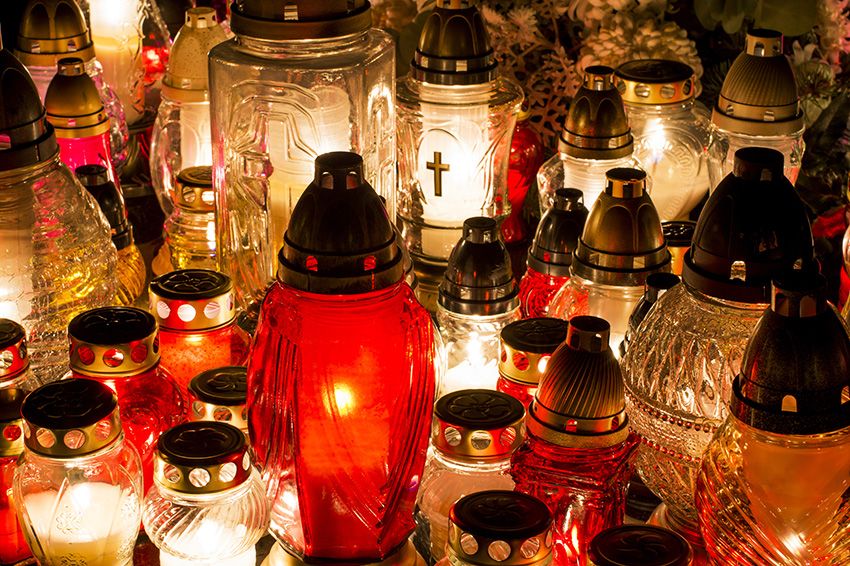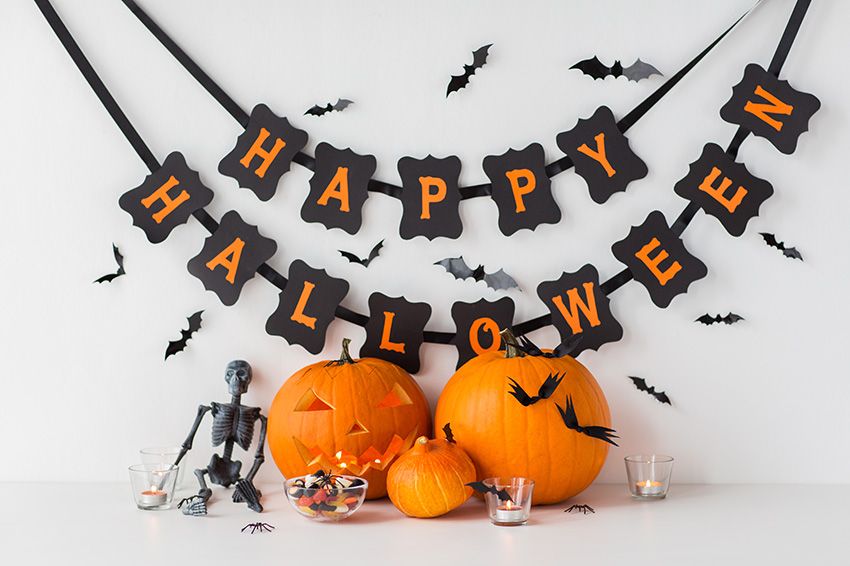Americans have been celebrating Halloween for just as long as Thanksgiving, and longer than Independence Day. But while the costume-friendly, sugar-filled holiday feels timeless, the version celebrated today — in the U.S. and around the globe — drastically differs from its Celtic origins. Once a night for honoring the dead, Halloween slowly transformed into a night of revelry and mischief with a supernatural twist. The biggest change? The focus on candy and treats, which American trick-or-treaters have made inseparable from the holiday. Candy and costume sales are expected to hit $10 billion in 2021, a record amount following 2020’s celebrations, downsized at a peak of the pandemic. Whether your Halloween plans include a spooky movie marathon or hosting your own monster mash, you can prep for Halloween trivia with these commonly asked questions.
Where Did Halloween Come From?

It’s not exactly clear what ancient Celts did during Samhain, the pagan holiday we now link with Halloween, but historians have some idea thanks to a surviving bronze calendar. The first written mentions of Samhain appeared in Europe around the first century, marking winter’s swift approach and the start of the Celtic new year. Celebrated on October 31, Samhain was a time when the wall between the spirit plane and the living world was at its weakest, allowing spirits to cross the boundary with ease. In an effort to curb vandalism and mishaps from angsty ghosts, the Celts hosted welcoming bonfires and left food offerings; eventually, the practice transitioned to dressing as ghouls themselves and traveling door to door in search of refreshments and merriment. Modern Halloween has held tight to many Celtic traditions, like fortune-telling and bobbing for apples, but Roman Christian attempts to squash pagan ceremonies starting around 600 CE started the slow transition from religious festival to the spooky secular event.
Colonists in early America brought some Halloween traditions with them (telling ghost stories, pulling pranks, and sharing harvest meals) but strict social and religious rules in Puritan communities scaled back the death-centric influence of early celebrations. Halloween would gain back some of its edge around the mid-1800s when a large influx of Irish immigrants began sharing their holiday traditions passed down from Celtic ancestors, such as carving pumpkins and donning costumes. The Halloween we’re familiar with today slowly spread across the U.S., and by the 1920s, trick-or-treaters across the country were looking forward to their one night of socially acceptable mischief and candy collecting.
How Did Halloween Get Its Name?

Samhain, Halloween, All Hallow’s Eve — a cluster of names surrounding October 31 can make it seem like the fall celebrations are all the same despite having different roots. Samhain, which is still celebrated by pagans worldwide, remains its own holiday that spun off the Halloween traditions we celebrate today. All Hallow’s Eve, however, was created in an attempt to replace Samhain as Christianity spread through Europe. Pope Gregory I crafted a calendar of holy days that coincided with non-Christian holidays around the early 600s CE, co-opting the celebrations in an effort to convert new followers. All Saint’s Day was set for November 1 with the intention of honoring Christian martyrs and saints around the same time Samhain was memorializing deceased loved ones. The holiday, which also went by the name All Hallow’s Day, picked up in popularity; the night prior (October 31) was referred to as All Hallow’s Eve. The name morphed into Hallowe’en, with the apostrophe eventually being dropped altogether.
Why Are Orange And Black Halloween Colors?

Halloween decorations primarily come in orange and black, and while there’s no definitive answer to when this color palette took root, both hues are fitting for the crisp, autumnal holiday. Orange is thought to signify fall, reflecting the colors of changing leaves and the season’s most abundant crops — think pumpkins, wheat, and carrots, which dominate gardens and farms this time of year. If you’ve ever felt called to decorate with seasonal squash, know the vibrant orange hue is practically contagious; despite being inedible, brightly colored gourds have sent Americans into autumnal decorating frenzies since the 1930s.
The use of black has a more clear connection to Halloween, thanks once again to the Celts. Because Samhain was a religious festival honoring the deceased, it wasn’t unusual for mourners and celebrants to don dark clothing or veils during festivities. Black also represented the shift to longer nights and shorter days associated with the autumnal equinox. With the blazing days of summer long gone and bountiful harvests with it, black became a visual symbol of death, darkness, and rest.
Why Do We Hand Out Candy?

Surprisingly, candy wasn’t always the main focus of Halloween. The Celts were known to carry treats in their pockets or bags during Samhain as a form of protection against unfriendly spirits; danger could be staved off with the bribe of a snack should a traveler encounter a particularly ill-behaved ghoul. While the rise of Christianity throughout Europe snuffed out many pagan practices associated with Samhain, the idea of exchanging food and treats remained. Following the creation of All Saint’s Day, British and Irish bakers would give away small, spiced “soul cakes” to revelers who meandered from house to house. Door knockers would promise prayers for the homeowner’s deceased family members in exchange for the raisin-topped treats.
In America, the early days of trick-or-treating in the ninth century didn’t exactly yield pillowcases full of candy either; costumed children roaming from door to door begged for money or food instead of sweets while older kids and teens went about the business of performing pranks. It’s likely that public sentiment about vandalism is what helped candy gain more importance than Halloween hijinks. Trickery was a common part of Halloween festivities through the late 1800s, with rowdy revelers performing relatively benign pranks such as soaping windows and tipping outhouses. But by the turn of the 20th century, holiday mischief was seen less as a right of passage for youngsters and more as vandalism and cruelty. As families moved from small communities to large cities, pranks escalated to include more costly property damage and were no longer tailored to specific victims, but unsuspecting passersby.
Cities began hosting parties, parades, and other events to curb Halloween destruction and create a more positive holiday atmosphere. Despite those efforts, it was World War II that drastically changed the holiday’s course; pranks were characterized as a wasteful use of limited resources and a disturbance to factory workers who didn’t have time or energy for tricks. After several years of dampened festivities, communities retooled Halloween, promoting the idea of costumed trick-or-treating as an enjoyable, safe activity. With a booming generation of post-war kids who could easily demand treats from their new subdivision neighbors, the concept took off, cementing itself today as the main way to celebrate the spookiest day of the year.
